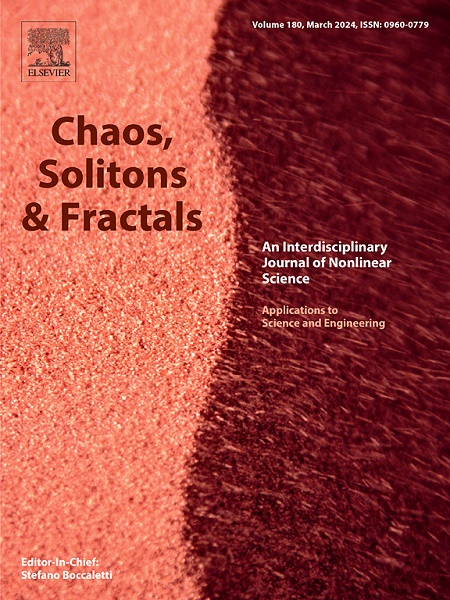基于记忆离子通道的仿生电路中各种刺激诱导的放电活动
IF 5.6
1区 数学
Q1 MATHEMATICS, INTERDISCIPLINARY APPLICATIONS
引用次数: 0
摘要
本文构建了一种基于记忆离子通道的仿生电路,并利用各种刺激来驱动电路,以揭示不同外部刺激对仿生电路的动态影响。该仿生电路具有一个一阶n型局部有源忆阻器(N-LAM),具有描述生物离子通道特性的反转电压,一个电容器代表神经元膜,以及一个电流刺激来模拟神经元上的外部刺激。数值模拟结果表明,低频和高频正弦刺激分别能诱发脉冲破裂和脉冲行为。有趣的是,低频正弦刺激可以作为一个慢变量来触发快慢动态,从而产生爆破行为。直流刺激可以驱动电路表现出频率自适应特性。也就是说,尖峰行为的频率与电流强度有关。此外,脉冲电流刺激可以通过调节脉冲电流刺激的幅度来触发具有可控时间间隔和尖峰数的瞬时放电活动。此外,还进行了基于离散元件的硬件实验,实验结果很好地验证了数值模拟的正确性。这些数值和实验结果表明,所提出的仿生电路能够有效地产生类似神经元的放电活动,并能通过各种外界刺激调节放电活动。本文章由计算机程序翻译,如有差异,请以英文原文为准。
Firing activities induced by various stimuli in a memristive ion channel-based bionic circuit
This paper builds a memristive ion channel-based bionic circuit and deploys various stimuli to drive the circuit to reveal dynamical effects of different external stimuli. The bionic circuit possesses a first-order N-type locally active memristor (N-LAM) with a reversal voltage to depict the properties of the biological ion channel, a capacitor to represent the neuronal membrane, and a current stimulus to simulate external stimulus on a neuron. Numerical simulations reveal that low- and high-frequency sinusoidal stimuli can induce bursting and spiking behaviors, respectively. Interestingly, the low-frequency sinusoidal stimulus can act as a slow variable to trigger fast-slow dynamics to generate the bursting behavior. A direct current (DC) stimulus can drive the circuit to exhibit frequency self-adaptation characteristics. That is, the frequency of the spiking behaviors is related to the current intensity. Besides, a pulse current stimulus can trigger instantaneous firing activities with controllable timing interval and spike counts by adjusting the amplitude of the pulse current stimulus. Furthermore, discrete component-based hardware experiments are conducted and the experimental results well validate the numerical simulations. These numerical and experimental findings demonstrate that the proposed bionic circuit can effectively generate neuron-like firing activities and regulate the firing activities by various external stimuli.
求助全文
通过发布文献求助,成功后即可免费获取论文全文。
去求助
来源期刊

Chaos Solitons & Fractals
物理-数学跨学科应用
CiteScore
13.20
自引率
10.30%
发文量
1087
审稿时长
9 months
期刊介绍:
Chaos, Solitons & Fractals strives to establish itself as a premier journal in the interdisciplinary realm of Nonlinear Science, Non-equilibrium, and Complex Phenomena. It welcomes submissions covering a broad spectrum of topics within this field, including dynamics, non-equilibrium processes in physics, chemistry, and geophysics, complex matter and networks, mathematical models, computational biology, applications to quantum and mesoscopic phenomena, fluctuations and random processes, self-organization, and social phenomena.
 求助内容:
求助内容: 应助结果提醒方式:
应助结果提醒方式:


